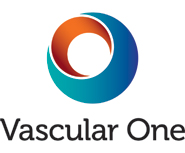We aim to provide you with the best information, quality images, and an insightful diagnosis. Our priority is the best outcomes for your patients, and a continuation of your support and care.
Abdominal Aortic Aneurysm (AAA)
The aorta is the largest artery in your body, and it carries blood away from your heart. When it reaches your abdomen, it is called the abdominal aorta. When a weak area of the abdominal aorta expands or bulges, it is called an abdominal aortic aneurysm (AAA).
Thoracic Aortic Aneurysm and Dissection
When a weak area of your thoracic aorta expands or bulges, it is called a thoracic aortic aneurysm (TAA). Approximately 25 percent of aortic aneurysms occur in the chest, and the rest involve the abdominal aorta.
Carotid Artery Disease for Stroke Prevention
Carotid artery stenosis is the narrowing of the carotid arteries. These are the main arteries in the neck that supply blood to the brain. Carotid artery stenosis, also called carotid artery disease, is a major risk factor for ischemic stroke. (This is the most common form of stroke and is usually caused by a blood clot plugging an artery.)
Peripheral Vascular Disease
Peripheral Vascular Disease refers to diseases of blood vessels outside the heart and brain. It's often a narrowing of vessels that carry blood to the legs, arms, stomach or kidneys.
Renal Angioplasty for Hypertention & Renal Failure
If the renal angiogram reveals a narrowing of the renal arteries, a balloon-tipped catheter can be used to stretch open the narrowing. The technique of stretching arteries open with a balloon is called angioplasty. The technique is more formally known as percutaneous transluminal angioplasty or PTA for short.
Claudication
Claudication is a medical term which refers to the limp which is produced by a pain in your leg when you walk. It is due to an inadequate blood supply to the muscles, so that they cramp up and you have to stop walking until the circulation returns.
Angioplasty
Angioplasty is a medical procedure in which a balloon is used to open narrowed or blocked arteries. Although the procedure is minor and done under local anaesthetic, it is a definite surgical operation and proper surgical care is required during and after the procedure.
Venous Disorders and Varicose Veins
Varicose veins are swollen veins that you can see through your skin. They often look blue, bulging, and twisted. Left untreated, varicose veins may worsen over time. Large varicose veins can cause aching and feelings of fatigue as well as skin changes like rashes, redness, and sores.
Duplex Ultrasound
Duplex Ultrasound clarifies the site of the disease and whether it is narrowing or a complete blockage. It also measures the length of the occlusion and the type of disease in the artery. All this information is necessary to be able to advise you on the best possible treatment for you.
Angiogram
An angiogram is a test performed to obtain an extremely precise picture of your arterial problems prior to any treatment. The test involves the insertion of a fine tube over a guidewire into the artery from your groin. An x-ray visible dye (contrast) is injected to outline all the arteries.
CT Angiography
Angiography is a minimally invasive medical test that helps physicians diagnose and treat medical conditions. Angiography uses one of three imaging technologies and, in some cases, a contrast material to produce pictures of major blood vessels throughout the body.
Selected Form
At vero eos et accusamus et iusto odio dignissimos ducimus qui blanditiis praesentium voluptatum deleniti atque corrupti quos dolores et quas molestias excepturi sint occaecati cupiditate non provident, similique sunt in culpa qui officia deserunt mollitia animi, id est laborum et dolorum fuga.
